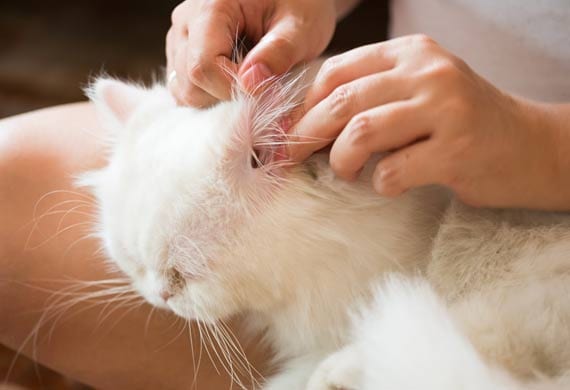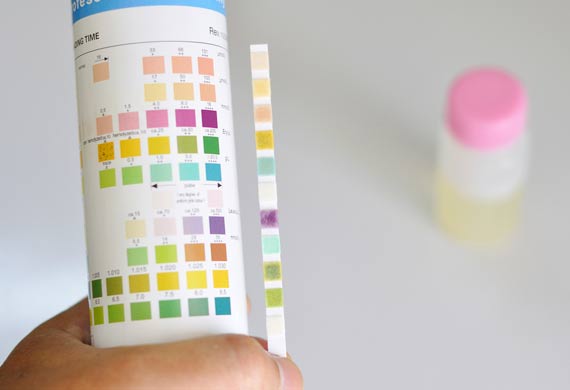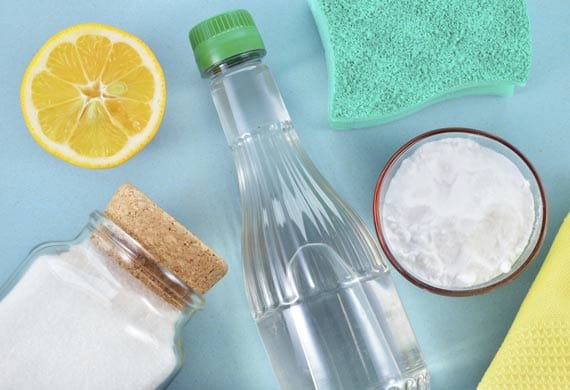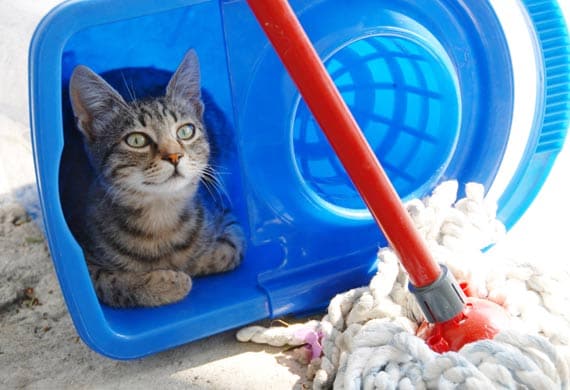Vinegar – It’s Not Just for the Kitchen
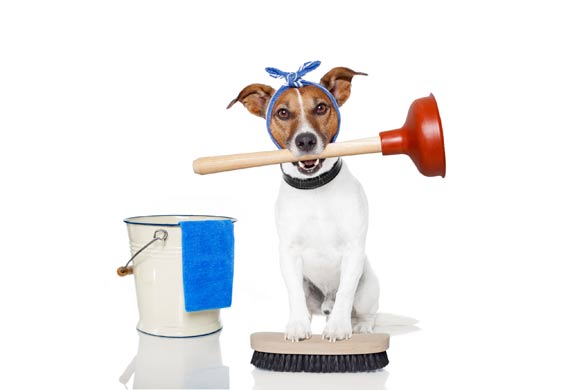
You know that bottle of vinegar in your cupboard? It’s not just for cooking. Dog and cat owners are using this inexpensive pantry staple in a variety of ways.
Vinegar can be safely used for treating many common health issues that affect pets, says Dr. Judy Morgan, a holistic veterinarian and certified veterinary food therapist from Clayton Veterinary Associates and Churchtown Veterinary Associates in New Jersey. The sour liquid also comes in handy for cleaning the messes and neutralizing the smells that are part of the deal when you live with critters. Here are seven vinegar uses for pet owners. Image: Stephanie Deissner / via Thinkstock
Image: Stephanie Deissner / via ThinkstockAiding Digestion
Pets on grain-based diets can have trouble digesting their food, resulting in higher-than-healthy levels of pH, says Morgan.
“If you add vinegar to the food, they’ll digest it better and lower the pH, which allows good bacteria to thrive in the body,” she says.
Morgan suggests grinding up raw fresh vegetables, covering them with organic apple cider vinegar and letting the veggies ferment in the refrigerator. Add a spoonful of the mixture to your pet’s food. The veggies will increase the nutritional value of the food and help with digestion.
“It’s really good for them,” she says.
You can also add vinegar to your dog or cat’s drinking water, about one teaspoon per quart of water. Of course not all pets will accept the taste so Morgan suggests having two water bowls out, one with vinegar and one without, to ensure that your pet gets enough water.
 Image: ThamKC / via Thinkstock
Image: ThamKC / via ThinkstockKeeping Fleas and Ticks Away
Vinegar repels fleas and ticks, says Morgan, who has used vinegar mixed with a popular skin treatment for humans on her horses.
To make your own flea and tick repellent, mix one part vinegar with one part water and spray it on your pet’s fur.
You can also add a few drops of vinegar to your pet’s drinking water to help repel fleas and ticks from the inside out. Morgan recommends one teaspoon per quart of water.
Image: tosangad / via ThinkstockCleaning Ears
Ear infections are a common problem for dogs, especially those with floppy ears. You can clean your pet’s ears with a 50/50 mixture of water and vinegar, Morgan says. Put the solution on a cotton ball and wipe the inside of your dog’s ears with the mixture, only applying it to the areas you can reach.
“If you have ear canals filled with bacteria and yeast, the pH is too high,” Morgan says. “If your dog has chronic problems, wiping out the ears will change the pH in there.”
Try diluting the vinegar with more water if your pet’s ears are extremely sore and raw, or she shies away from the treatment.
Image: jarun011 / via ThinkstockRelieving Urinary Tract Infections
Vinegar can help dogs and cats that suffer from urinary tract infections. However, before trying a vinegar remedy, you will first need to find out what the pH is in your pet’s urine, Morgan says.
“If the pH is above 7, then apple cider vinegar is your best friend,” Morgan says. “The vinegar will lower the pH and dissolve the crystals. If the pH is lower than 7, then I wouldn’t recommend vinegar. You could make the problem worse.”
It can be dangerous to try to treat a urinary tract infection at home as it can easily progress from a simple bladder infection to a kidney infection.
To find the pH level, collect a urine sample in a sanitized container and take it to your vet. The urinalysis will give your veterinarian information about pH, white blood cells, blood in the sample, concentrating ability, crystal formation, and possible bacteria in the urine. Once the values are known, your vet will be able to advise you on the appropriate treatment.
Image: tinglee1631 / via ThinkstockTreating Hot Spots
Organic apple cider vinegar can be used to treat hot spots, Morgan says. Unlike white distilled vinegar, unfiltered organic apple cider vinegar contains “mother,” strands of proteins, enzymes, and friendly bacteria that make the vinegar appear cloudy.
Morgan recommends mixing equal parts vinegar with water and spraying the mixture on your dog’s hot spots.
“You can massage it into the areas,” Morgan says. “If you have a raw hot spot, it could sting a little. You want to test it on your dog.”
Image: Tashi-Delek / via ThinkstockNot a Cure-All
For all the good it does, vinegar is not a cure-all. A professional examination may be necessary if, for example, your dog’s skin sore does not improve after a couple of days of using a vinegar treatment.
“If the problem is getting worse, seek out veterinary care so you are not overlooking something,” Morgan says. “A sore could be cancer. You’ve got to get it looked at.”
Image: Geo-grafika / via ThinkstockNeutralizing Odors
If your pet’s odor is bugging you, distilled white vinegar can make the smell go away. Maids by Trade, a pet-friendly Portland, Oregon-based cleaning service, recommends spraying a thin layer of vinegar over the carpet and letting it evaporate, If the odor remains, shampoo your carpets and add vinegar to the carpet cleaner instead of carpet cleaning soap.
Vinegar may not be safe on all upholstery fabrics. Check the label on the furniture first before applying a vinegar solution says Mollie Swayne, content manager for Maids by Trade.
Image: EricaLianneInglett / via ThinkstockCleaning Messes
Accidents are bound to happen in homes with animals. For urine stains on carpeting, Swayne recommends treating the stained area with baking soda and distilled white vinegar diluted with water.
“We use vinegar in our clients’ homes all the time,” Swayne says. “It’s very safe for pets.”
The cleaning company does not recommend using vinegar on wood floors or on marble, granite, or other stone countertops, since the acid in vinegar could harm the surfaces, Swayne says.
To freshen and clean, mix vinegar with water and spray the solution over your dog’s bed, or add vinegar to the washing machine when you launder the pet bed, Swayne says. Vinegar can also be used to clean your animal’s food and water bowls.
“For general cleaning, vinegar is pretty good,” Swayne says. “It’s very versatile.”
Source: petMD, LLC. This article was reviewed for accuracy by Dr. Katie Grzyb, DVM.
4244 Madison Avenue, Trumbull, CT 06611
© 2016-2022 Wet Paws Dog Grooming, LLC. All rights reserved.

